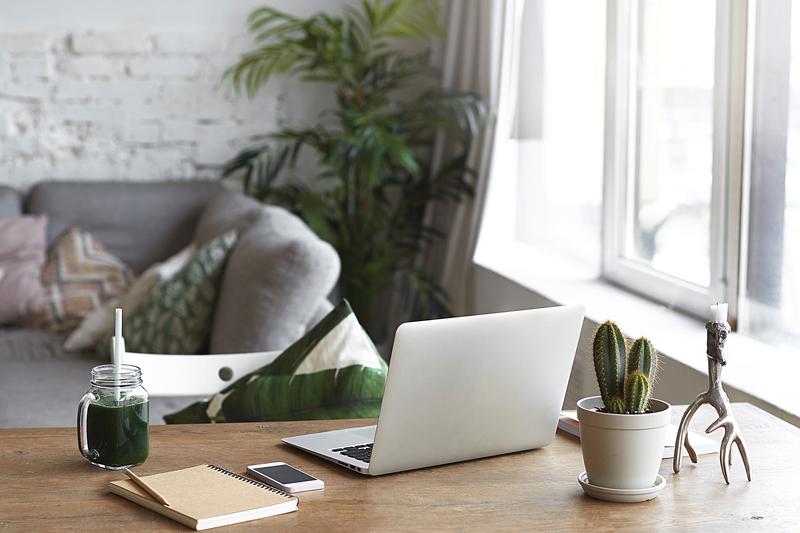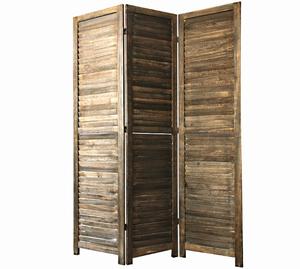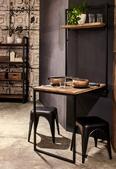The trend of working from home might outlast the COVID-19 crisis. Rebecca Lo receives some expert advice on how to get more out of Hong Kong’s tight spaces in such a scenario.
 Interior designer Monique McLintock suggests putting up a partition in the living room to demarcate kid and adult zones during work hours. (PHOTO PROVIDED TO CHINA DAILY)
Interior designer Monique McLintock suggests putting up a partition in the living room to demarcate kid and adult zones during work hours. (PHOTO PROVIDED TO CHINA DAILY)
The Lunar New Year holiday of 2020 extended to a much longer break than usual. What began as an outbreak of COVID-19 in Wuhan had shut down most of China by late January. As the virus reached the far corners of the globe, much of the world went under lockdown. Many people lost their livelihood. And, unless deemed to be in essential services, those who kept their jobs had to work from home to reduce the risk of spreading the virus.
In Hong Kong, one of the world’s most densely populated cities, months of working from home, sitting in tight quarters shared with children being taught online, has taken its toll. While kids may cherish family time with parents available at home 24/7, parents themselves have struggled with enforcing boundaries between employment obligations and domestic life. Wellbeing took a beating as people tried adapting to the new normal of working entirely or partly from home, with Zoom meetings replacing business trips.
According to real estate services firm Colliers International’s report published on April 3, titled “Workplace Wellness — What Effects is COVID-19 Having in the Workplace?,” wellness has morphed from a CSR consideration into a strategic priority. Without healthy buildings and spaces, employee wellbeing is compromised—which means that it is both a personal and commercial imperative.
 Colliers International’s Victoria Gilbert recommends choosing a spot with plenty of daylight and fresh air while setting up work spaces at home. (PHOTO PROVIDED TO CHINA DAILY)
Colliers International’s Victoria Gilbert recommends choosing a spot with plenty of daylight and fresh air while setting up work spaces at home. (PHOTO PROVIDED TO CHINA DAILY)
Victoria Gilbert, the report’s Hong Kong-based author and Colliers’ wellness consulting leader within its workplace advisory for occupiers in Asia Pacific, believes that while commercial real estate will have to adapt to COVID-19 lingering in communities, people working from home can take the initiative to ensure a healthy environment.
“Some of the ways people can improve their overall wellbeing include creating a dedicated work area with a desk, comfortable chair and computer screen,” she advises. “Use a keyboard and mouse if working from a laptop. Choose a space with access to daylight. Improve the amount of fresh air circulation by opening a window to increase oxygen levels. Consider setting a focus time, quiet space or use headphones to reduce background noise. Establish a routine of fixed working hours: set start and finish times, and communicate this with managers and team members.”
 Movable screens, such as this one by Stockroom, can help create a cosy, private work space at home. (PHOTO PROVIDED TO CHINA DAILY)
Movable screens, such as this one by Stockroom, can help create a cosy, private work space at home. (PHOTO PROVIDED TO CHINA DAILY)
Inspirational spaces
Hong Kong-based interior designer Monique McLintock has fielded numerous questions on ways of tweaking a corner of a home into an office since COVID-19 happened. As mother to nine-year-old son Rorke, the California native knows that working from home is easier said than done with young kids in the room.
“The most important part of working from home is to find a space with no distractions, such as a guestroom that can double as a work area,” McLintock suggests. “One of my clients is a mother with four boys, and she installed a tent in her living room with a tiny desk. It works for her. For people who don’t have the extra space, a drop down desk is a good solution — BoConcept and TREE make some good ones that can be pushed up against a wall when not in use.”
 A drop down table by Tree can be folded up against the wall when not in use. (PHOTO PROVIDED TO CHINA DAILY)
A drop down table by Tree can be folded up against the wall when not in use. (PHOTO PROVIDED TO CHINA DAILY)
To enhance wellbeing, McLintock believes that a workspace should be inspirational. A bright area with natural light decorated with plants, art or framed photos keep the mood cheerful. If pressed for space, storage should do double duty, such as an ottoman with a removable seat and dedicated storage for office paraphernalia.
“Consider a movable screen to divide a living and dining area temporarily into kid and adult zones,” McLintock advises. “If children cannot see their parents, they are less inclined to distract them.” Altfield Interiors offers a variety of designer fabric covered screens that add artistic flare to a room, while Stockroom recommends its selection of wooden screens for those who prefer a more rustic vibe.
McLintock further advises dedicating set hours or chunks of the day for work, with a “do not disturb” sign on the door or screen. “Many work at night after their kids are in bed,” she says. “In our household, Rorke does homework in the morning while I work, and we both take a break at 2 pm. It is important to put together a schedule and stick to it.”
 Creating a work space that’s off-limits to the rest of the family during work hours is crucial, says interior designer Monique McLintock. (PHOTO PROVIDED TO CHINA DAILY)
Creating a work space that’s off-limits to the rest of the family during work hours is crucial, says interior designer Monique McLintock. (PHOTO PROVIDED TO CHINA DAILY)
Onus on employers
Looking into her crystal ball, Gilbert sees the return of COVID-19-like disruptions in commercial real estate in the future: “While we are seeing a return to the workplace, working remotely is now a viable option. Companies will need to address the issues of ergonomics, connectivity and support for employees in all working environments, including homes.”
Health being at the forefront of concerns for those returning to their workplace, Gilbert advises employers to become more proactive — help employees boost immunity, promote mental health and improve indoor air quality.
“The World Health Organization warns that poorly ventilated buildings affect air quality and can contribute to the spread of disease,” she notes. “Yet proper ventilation, filtration and humidity levels can help to reduce the spread of pathogens.”
Gilbert observes that industries that can leverage technology and operate online are the ones that function and adapt well to the new normal. At the same time, she stresses that employee wellbeing should be important for all sectors.
“Companies that prioritize this will reduce the risk of burnout, stress and other factors that reduce productivity,” she affirms. “Ensuring that employees are well equipped, have methods to stay connected, and can access a robust wellness program are extremely important to address and minimize these risks.”


